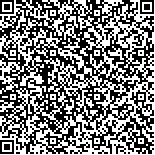| 引用本文: | 沈琳,李晓红,周理,丁思家,罗勤,黄灵,等. 紫外荧光法和氧化微库仑法测定天然气中总硫含量的比对研究[J]. 石油与天然气化工, 2019, 48(5): 93-100. |
| |
|
| |
|
|
| 本文已被:浏览 2485次 下载 951次 |

码上扫一扫! |
|
|
| 紫外荧光法和氧化微库仑法测定天然气中总硫含量的比对研究 |
|
沈琳1,2,李晓红1,2,周理1,2,丁思家3,罗勤1,2,黄灵1,2,陈勇1,2
|
|
1.中国石油西南油气田公司天然气研究院;2.中国石油天然气质量控制和能量计量重点实验室;3.中国石油西南油气田公司输气处
|
|
| 摘要: |
| 目前国内检测天然气中总硫含量应用比较多的方法是氧化微库仑法和紫外荧光法,在实际应用中,紫外荧光法具有比氧化微库仑法更加稳定抗干扰的优点。同时,越来越多的紫外荧光仪使用反馈都优于氧化微库仑仪。为了对两种方法进行充分研究,在8家实验室用不同的紫外荧光仪以及在4家实验室用不同的氧化微库仑仪对同一批次21个样品进行了重复测试,分别从精密度、稳定性、仪器效率、操作、普及情况5个方面进行比较。研究结果表明,两种方法的精密度数据相差不大,紫外荧光法相比氧化微库仑法具有仪器分析效率更高、调试过程更快速简捷,稳定性更优越并在国内的使用越来越普及等优势。该研究成果为两种方法测定天然气总硫含量测试的结果判定提供了参考,为GB 17820-2018《天然气》中将总硫检测的仲裁方法修改为紫外荧光法提供了有力的技术支撑,也为制定ISO 20729:2017《天然气 硫化合物测定 用紫外荧光法测定总硫含量》和修订GB/T 11060.8-2012《天然气 含硫化合物的测定 第8部分:用紫外荧光光度法测定总硫含量》提供了基础数据;与现行的GB/T 11060.4-2017《天然气 含硫化合物的测定 第4部分:用氧化微库仑法测定总硫含量》精密度要求相比,该研究成果更契合日常实验检测水平,建议开展该项国家标准的修订工作。 |
| 关键词: 天然气 总硫 紫外荧光法 氧化微库仑法 |
| DOI:10.3969/j.issn.1007-3426.2019.05.018 |
| 分类号: |
| 基金项目:中国石油天然气股份有限公司科学研究与技术开发项目“天然气质量控制和能量计量实验新方法研究”(2016D-5006-09);中国石油 天然气股份有限公司科学研究与技术开发 项目“高酸性天然气高效处理技术研究”(2019D-1609);中国石油西南油气田公司科学研究与技术开发项目“氮中硫氧化碳、硫化氢、二硫化碳、甲硫醇、乙硫醇、甲硫醚气体标准物质研究”(20190306-01) |
|
| Comparison of ultraviolet fluorescence method and oxidative microcoulometry method for determination of total sulfur content in natural gas |
|
Shen Lin1,2, Li Xiaohong1,2, Zhou Li1,2, Ding Sijia3, Luo Qin1,2, Huang Ling1,2, Chen Yong1,2
|
|
1. Research Institute of Natural Gas, PetroChina Southwest Oil& Gasfield Company, Chengdu, Sichuan, China;2. Key Laboratory of Natural Gas Quality and Energy Measurement, CNPC, Chengdu ,Sichuan , China;3. Gas Transmission Division, PetroChina Southwest Oil & Gasfield Company, Chengdu, Sichuan, China
|
| Abstract: |
| At present, oxidative microcoulometry method and ultraviolet fluorescence method are widely used in the determination of total sulfur in natural gas. In practical application, ultraviolet fluorescence method has more stable anti-interference advantages than oxidation microcoulometry method; meanwhile, more ultraviolet fluorescence instruments are better used than oxidation microcoulometry instruments by user’s feedbeck. In order to fully study the two methods, and compared from five aspects:precision, stability, instrument efficiency, operation and popularity, 21 samples of the same batch were tested with different ultraviolet fluorescence analyzers in 8 laboratories and different oxidative microcoulometry analyzers in 4 laboratories. The results show that the precision data of the two methods are almost the same. Compared with the oxidative microcoulometry method, the ultraviolet fluorescence method has the advantages of higher instrument analysis efficiency, quicker and simpler debugging process, better stability and more and more popular use in China. The research results provide a reference for the determination of the results of the two methods for determining the total sulfur content in natural gas. It provides a strong technical support for the new edition of GB 17820-2018 Natural gas changing the arbitration method of total sulfur into the ultraviolet fluorescence method, which provides basic data for ISO 20729:2017 Natural gas-Determination of sulfur compounds-Determination of total sulfur content by ultraviolet fluorescence method and corresponding revised editions of GB 11060.8-2012 Natural gas-Determination of sufur compound-Part 8:Determination of total sulfur content by ultraviolet fluorescence spectrophotometry. Compared with the precision requirement of GB/T 11060.4-2017 Natural gas-Determination of sulfur compound- Part 4:Determination of total sulfur content by oxidative microcoulometry method, the results are more in line with the level of routine experimental testing, which suggests to carry out the revision of this national standard. |
| Key words: natural gas total sulfur ultraviolet fluorescence method oxidative microcoulometry method |
|
|
|
|